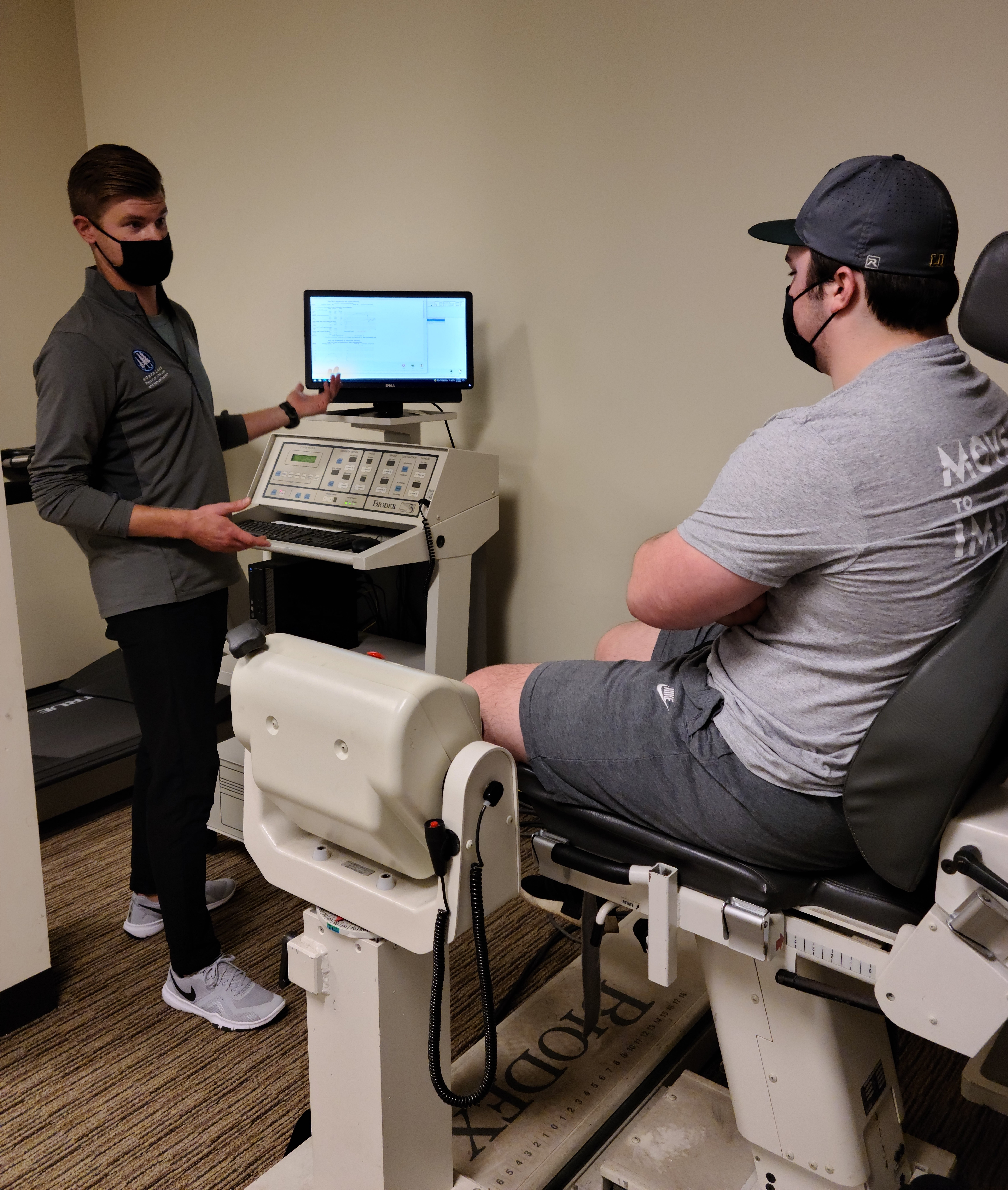
Isokinetic Testing at North Lake Physical Therapy
by Aaron Holtz, DPT
Have you undergone knee surgery or recently sustained a knee injury? Did you go through rehab for an ACL reconstruction and are unsure if you are ready to return to your sport of choice? Do you have knee pain when you are performing daily tasks, such as stairs and squatting? These are common issues that can be addressed using an isokinetic machine. At North Lake Physical Therapy, we use isokinetic testing to understand how a patient’s rehab is progressing and when it is safe to return to sport after a surgery or injury. Isokinetic testing is the Gold Standard in ACL Reconstruction rehab for return to play testing, according to Sinacore et al. Our isokinetic machine gives our physical therapists quantitative knowledge on where patients are with their strength and muscle activation to safely return to activities they want to get back to.
According to the Delaware-Oslo ACL cohort study, we can use simple decision rules with isokinetic testing that can reduce the risk of reinjury following ACL Reconstruction surgery when returning to sport. This testing allows our providers to reduce the likelihood of reinjury from 38.2% to only 5.6%, following the 2-year span from surgery. That is a HUGE difference! Another recent study by Toole et al found that only 14% of athletes cleared by their orthopedic surgeons could pass basic return to play test. By using our isokinetic machine, our physical therapists can be sure our patients can return to sport and activity and avoid unnecessary ongoing rehab in the future.
By now, you may be asking, what is an isokinetic machine and how is it so good at avoiding the risk for reinjury? By using our isokinetic machine, we can look closely at how strong a patient’s quadriceps muscle is and if there may be compensations the patient is using to accomplish a certain task. These faulty movement mechanics are the primary reason that knee pain and injuries can occur in the first place. After we use isokinetic testing, we can apply this knowledge to the functional movements related to a patient’s particular activity of choice and get them back to doing what they want to do. By achieving proper benchmarks with isokinetic testing and quadriceps muscle strength, patients at North Lake Physical Therapy are stronger and safer to return to sports and enjoy their life without pain.
To learn even more about isokinetic testing at North Lake Physical Therapy’s Hollywood clinic click here
Ready to start your PT with North Lake Physical Therapy? Don’t wait, Request an appointment TODAY!
RESOURCES
• Grindem, H, Snyder-Mackler, L, Moksnes, H, Engebretsen, L, Risberg, MA. (2016). Simple decision rules can reduce reinjury risk by 84% after ACL reconstruction: the Delaware-Oslo ACL cohort study. British Journal of Sports Medicine, Epub ahead of print. https:// doi.org/10.1136/bjsports-2016-096031
• Sinacore, JA, Evans, AM, Lynch, BN, Joreitz, RE, Irrgang, JJ, Lynch, AD. (2017). Diagnostic Accuracy of Handheld Dynamometry and 1-Repetition-Maximum Tests for Identifying Meaningful Quadriceps Strength Asymmetries. Journal of Orthopaedic & Sports Physical Therapy, 47(2), 97–107. https://doi.org/10.2519/jospt.2017.6651
• Toole, AR, Ithurburn, MP, Rauh, MJ, Hewett, TE, Paterno, MV, Schmitt, LC. (2017). Young Athletes Cleared for Sports Participation After Anterior Cruciate Ligament Reconstruction: How Many Actually Meet Recommended Return-to-Sport Criterion Cutoffs? The Journal of Orthopaedic and Sports Physical Therapy, 47(11), 825–833. https://doi.org/10.2519/jospt.2017.7227
• Schmitt, LC, Paterno, MV, Ford, KR, Myer, GD, Hewett, TE. (2015). Strength Asymmetry and Landing Mechanics at Return to Sport after Anterior Cruciate Ligament Reconstruction. Medicine & Science in Sports & Exercise, 47(7), 1426–1434. https://doi.org/10.1249/ MSS.0000000000000560
